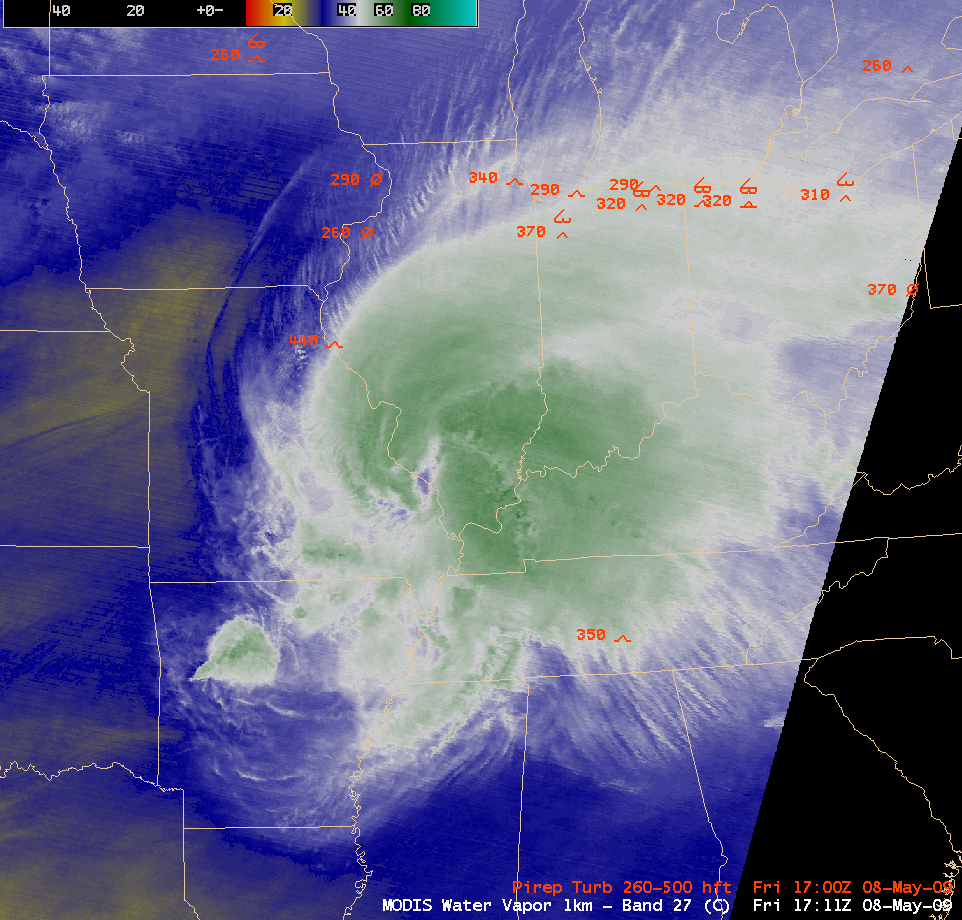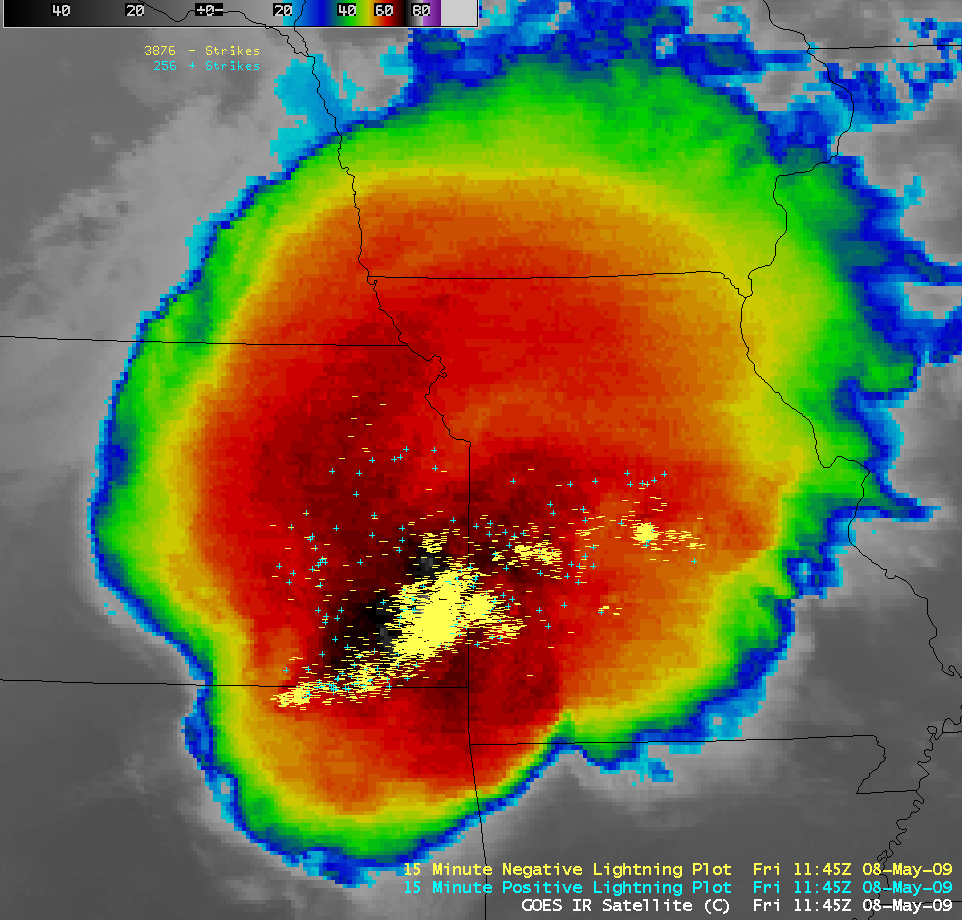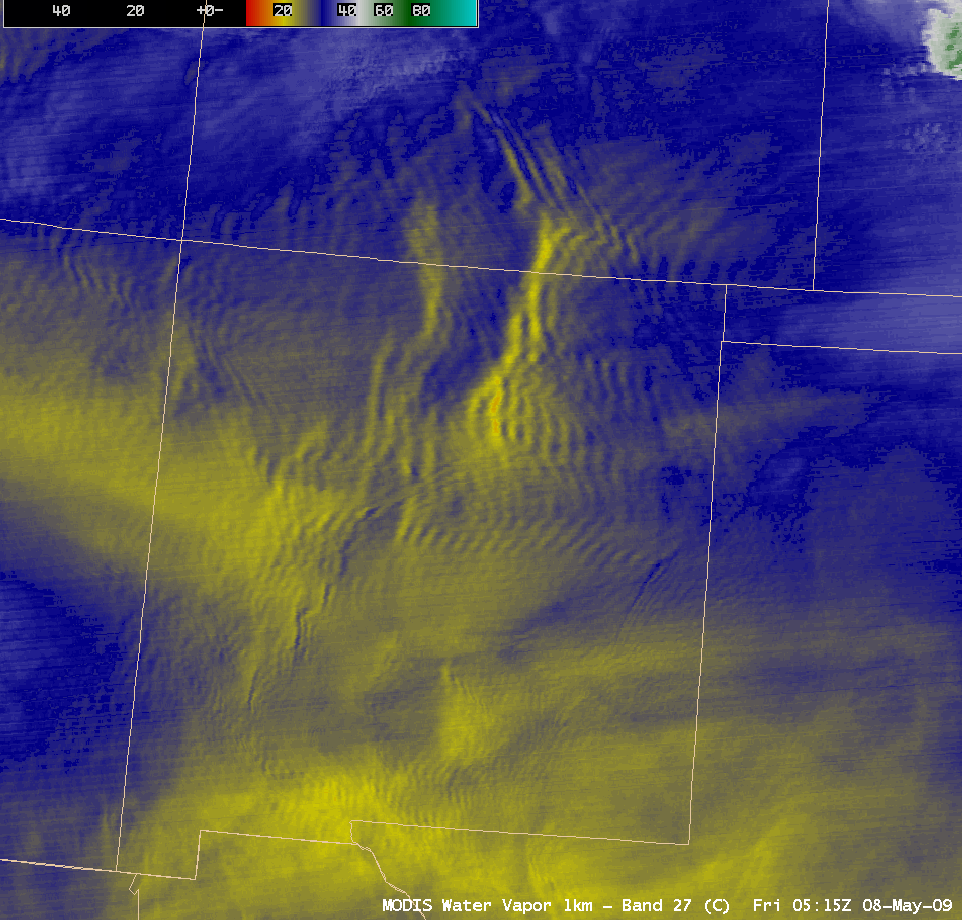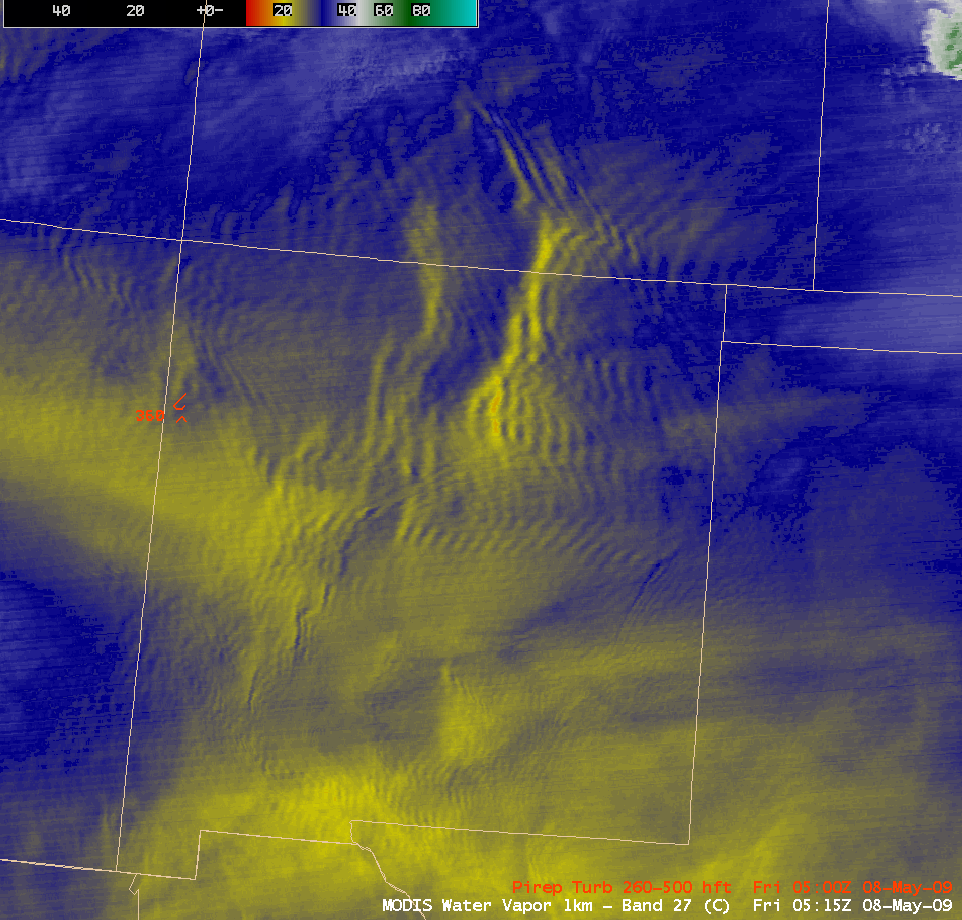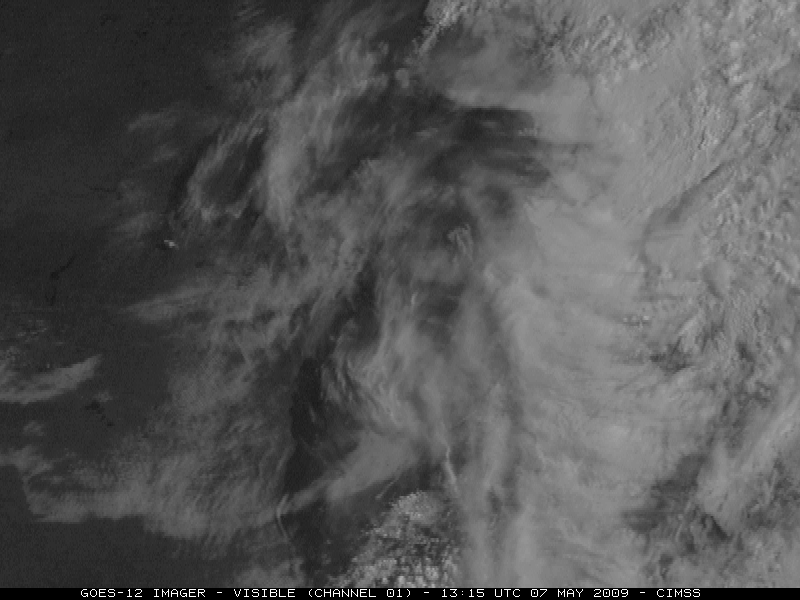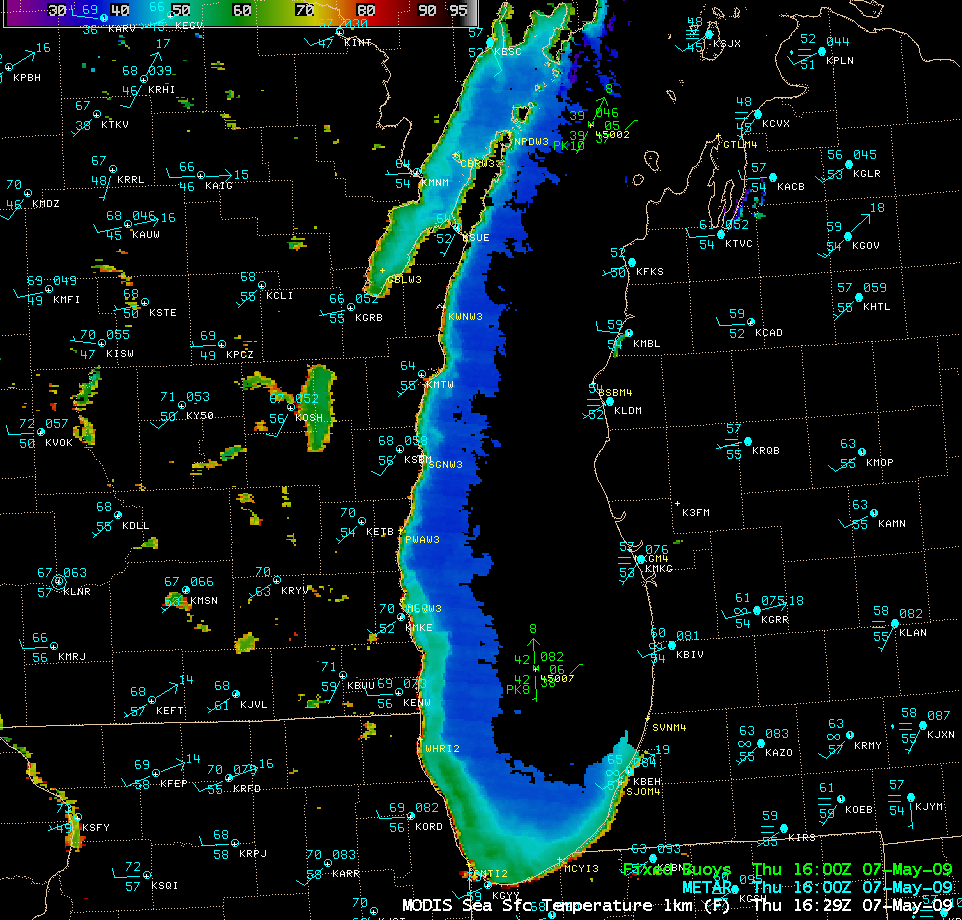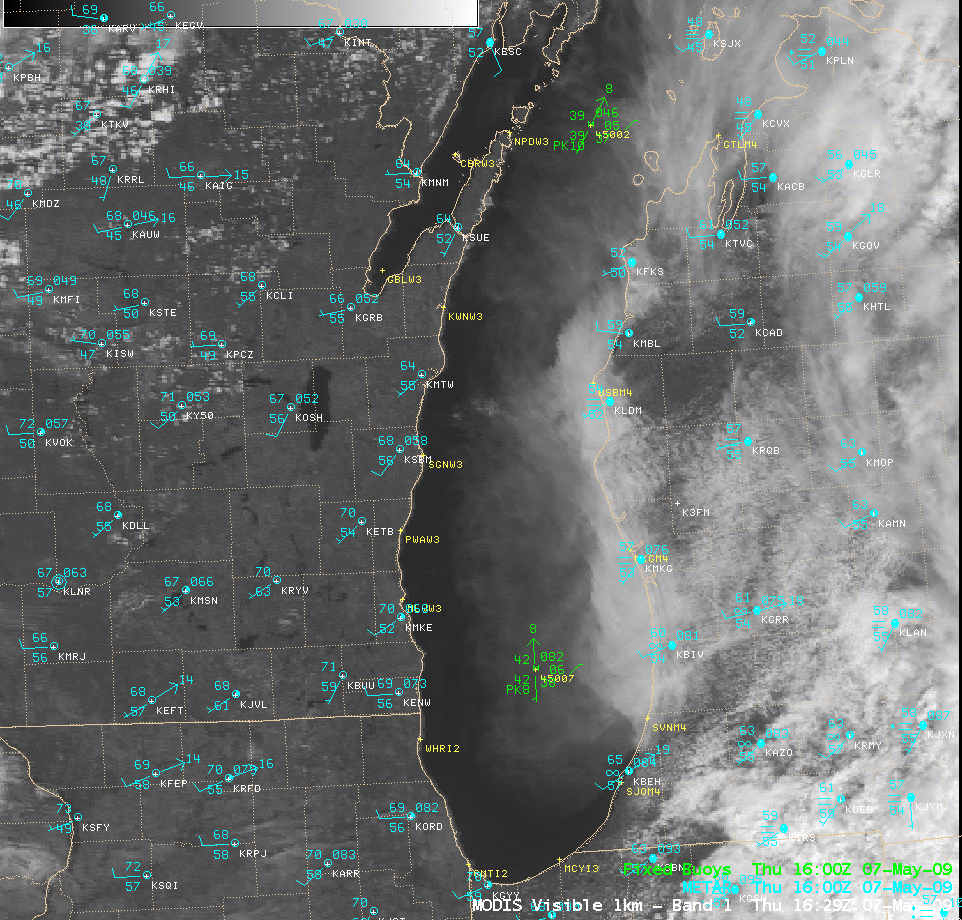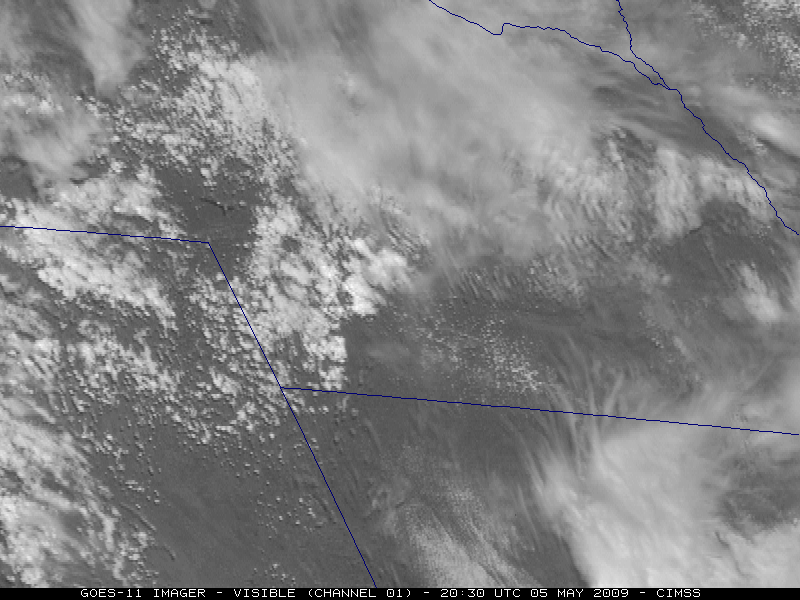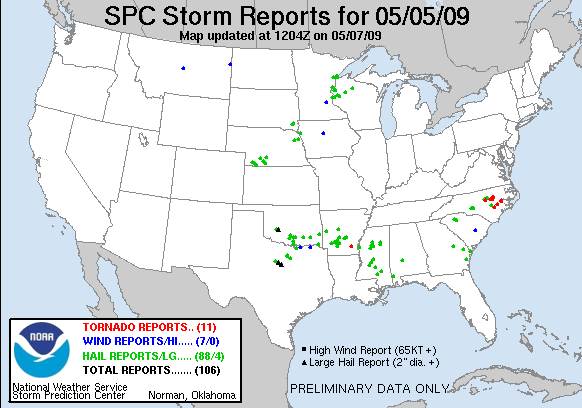An unusually-large derecho event formed over Kansas during the pre-dawn hours on 08 May 2009, and then moved rapidly eastward across Missouri and Illinois during the morning hours. GOES-12 10.7 µm IR window images (above) showed the large areal coverage of cold cloud tops (which were as cold as -79º C in southeastern Kansas).
The impressive derecho left a long swath of storm reports (below), which included several tornadoes and wind gusts to 87 knots (100 mph) at 11:30 UTC in Kansas, 81 knots (93 mph) at 12:15 UTC in Missouri, and 92 knots (106 mph) at 18:25 UTC in Illinois. Hail as large as 2.75 inch in diameter was reported in Missouri at 14:34 UTC.
As the storm matured toward mid-day, it began to display transverse banding on both the northern periphery and the southern periphery of the cloud shield (below). This transverse banding is often a signature of high-altitude turbulence — and there were indeed a number of pilot reports of turbulence along the edges of the convective complex.
The storm was also a prolific producer of lightning: at one point, it was producing over 4000 cloud-to-ground strikes every 15 minutes (below).
View only this post Read Less




